introduction To Historical Egypt Travel
Have you ever wondered what it feels like to walk through the halls of time? Imagine standing where pharaohs once stood, feeling the pulse of ancient Egypt beneath your feet. Egypt, a land where history whispers through the winds of the desert and the waters of the Nile, offers an unparalleled journey into the past. From the majestic Pyramids of Giza and Sphinx to the sprawling temples, every corner of this ancient land holds a story waiting to be discovered.
As travelers, we often seek connections with the places we visit, yearning to understand their essence and significance. Egypt’s rich tapestry of history, culture, and heritage makes it a timeless destination for those who crave a deeper understanding of the world. Historical Egypt travel guides serve as our bridge to this ancient civilization, providing insights and narratives that transform our journey from a mere visit to an immersive experience.
In this article, we delve into the captivating world of historical Egypt travel guides. These guides not only lead us through monumental landmarks but also connect us with the stories and secrets of a civilization that has fascinated humanity for millennia.
Overview of Egypt’s Historical Significance
Egypt is often hailed as one of the world’s most historically rich civilizations, a beacon of ancient knowledge and monumental achievements. This land of wonders has been a cradle of human civilization, shaping art, science, and culture in ways that continue to influence the modern world.
From the enigmatic Pyramids of Giza, which have stood the test of time as symbols of architectural brilliance, to the enigmatic Sphinx, whose gaze has watched over the sands of time, Egypt’s ancient relics are testaments to its grandeur. The Valley of the Kings, where pharaohs were laid to rest with their treasures, reveals the profound beliefs and rituals surrounding death and the afterlife.
But Egypt’s historical tapestry doesn’t end with the age of the pharaohs. The Greco-Roman period brought new dimensions to its cultural landscape, evident in the city of Alexandria, founded by Alexander the Great. Here, the blending of Greek and Egyptian cultures gave rise to iconic structures like the Great Library and the Roman amphitheater.
The Islamic heritage of Egypt further enriches its historical narrative. Cairo, with its magnificent mosques and citadels, tells tales of a medieval Islamic civilization that was both a center of learning and a political powerhouse. The minarets and domes of Cairo’s skyline are not just architectural marvels; they are symbols of a vibrant cultural and religious history.
Exploring Egypt’s historical significance is like piecing together a vast mosaic, each fragment offering a glimpse into different eras and influences that have shaped this extraordinary land. Whether you are marveling at the colossal statues of Ramses II or wandering through the bustling streets of Islamic Cairo, every experience is a step back in time, a chance to witness the enduring legacy of one of the world’s oldest civilizations.
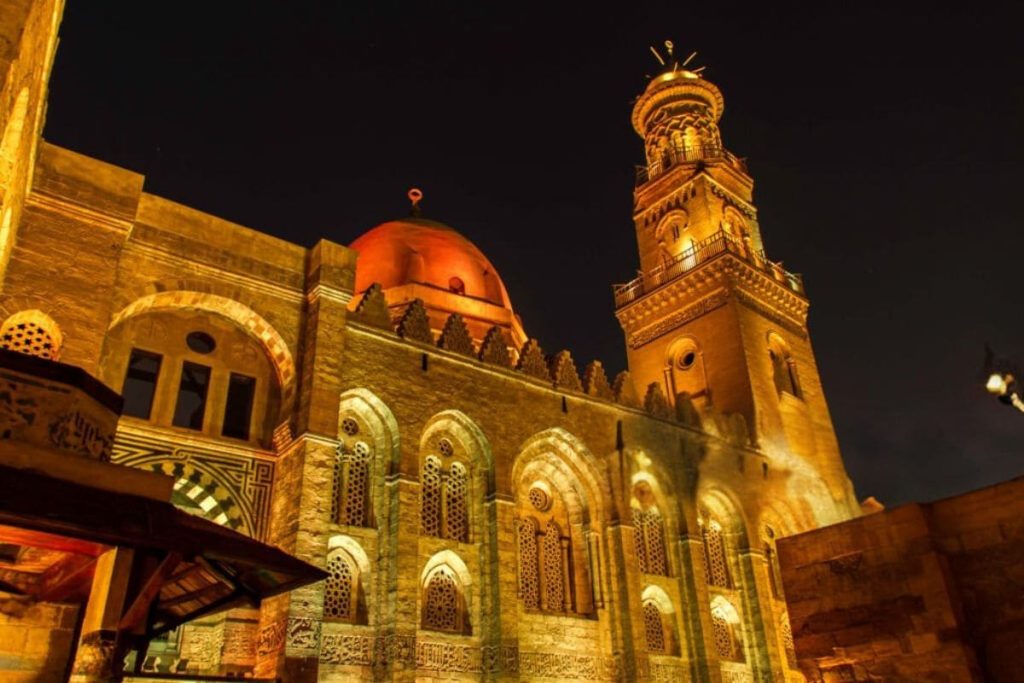
Major Historical Sites and Cities
When it comes to historical Egypt travel, Egypt offers a vast array of sites that span thousands of years and tell countless stories of past glory and innovation. Here are some key locations across Egypt that are essential for any historical journey:
Cairo
Cairo, the bustling heart of Egypt, is a city where ancient and modern worlds converge. As you navigate through its vibrant streets, you can feel the pulse of history at every turn.
- Pyramids of Giza: These iconic pyramids are among the most recognizable monuments in the world. The Pyramids of Giza and Sphinx, built for Pharaoh Khufu, is the last of the Seven Wonders of the Ancient World still standing. The nearby Sphinx, with its lion’s body and human head, adds to the mystique of this ancient site.

Egyptian Museum: Located in Tahrir Square, this museum houses an unparalleled collection of ancient Egyptian artifacts, including the treasures of Tutankhamun. Walking through its halls, you encounter mummies, statues, and relics that offer a deep dive into Egypt’s rich history
- Islamic Cairo: This area includes the historic Al-Muizz Street, where you can find the Al-Azhar Mosque, one of the oldest universities in the world, and the Sultan Hassan Mosque, a masterpiece of Islamic architecture.
- Citadel of Saladin: A medieval Islamic fortification that offers panoramic views of Cairo. The citadel includes the beautiful Muhammad Ali Mosque, also known as the Alabaster Mosque.
Luxor
Luxor, often referred to as the world’s greatest open-air museum, is a city where history comes alive in grand temples and royal tombs
- Karnak Temple: This vast temple complex is dedicated to the god Amun and is one of the largest religious buildings ever constructed. Its towering columns, massive statues, and detailed carvings make it a must-visit site for history enthusiasts.
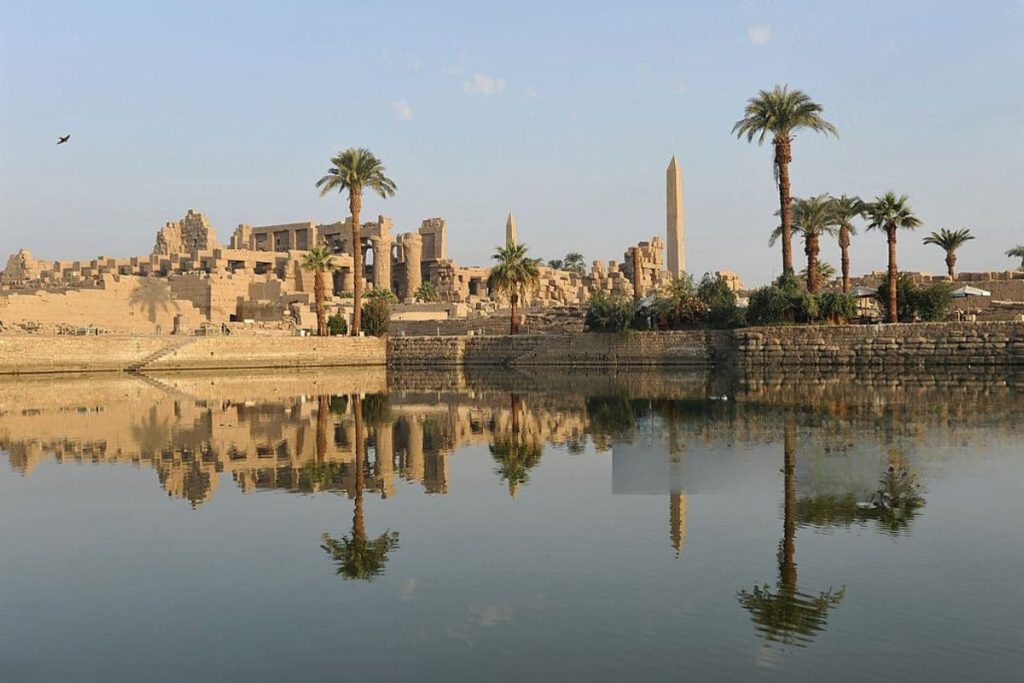
- Valley of the Kings: This ancient burial ground for pharaohs and nobles features elaborate tombs decorated with vivid murals. The tomb of Tutankhamun, discovered in 1922, remains one of the most significant archaeological finds, offering insights into ancient Egyptian burial practices.

- Luxor Temple: Located on the east bank of the Nile, Luxor Temple is dedicated to the rejuvenation of kingship and was the focus of the annual Opet Festival. Its grand colonnades and statues create an impressive sight, especially when illuminated at night.
- Hatshepsut’s Temple: This mortuary temple of Queen Hatshepsut, one of Egypt’s few female pharaohs, is renowned for its unique terraced design and stunning location against the cliffs of Deir el-Bahari.
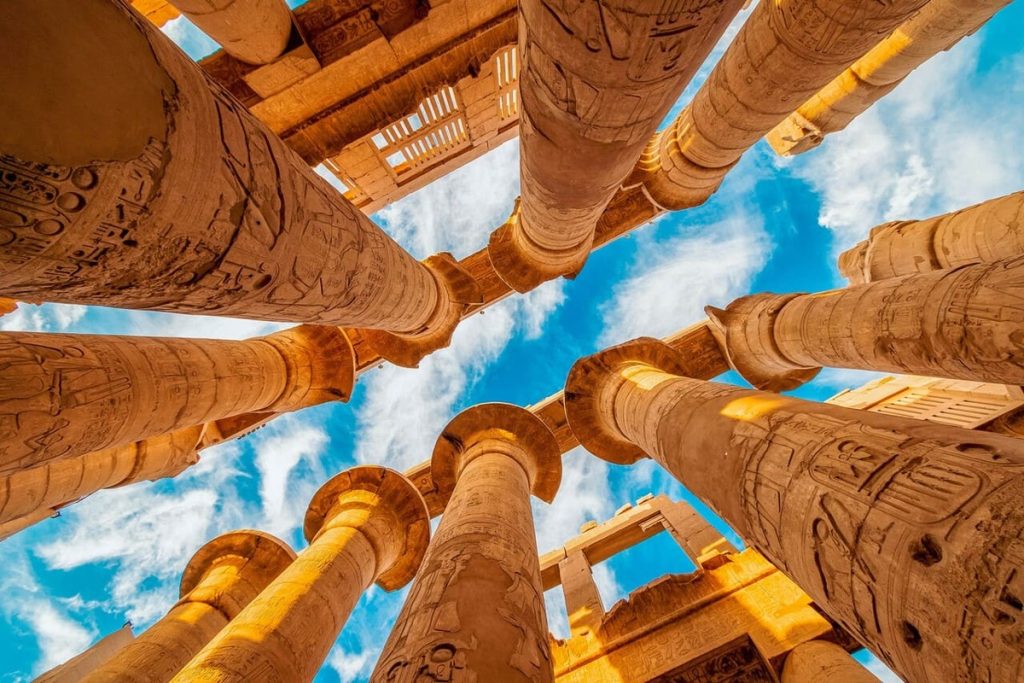
Aswan
Aswan, a serene city along the Nile, is home to some of Egypt’s most impressive monuments.
- Abu Simbel: These massive rock temples were built by Ramses II and are famous for their colossal statues. The temples were relocated in a remarkable engineering feat to save them from flooding due to the construction of the Aswan High Dam.
- Philae Temple: Dedicated to the goddess Isis, this temple complex is located on Agilkia Island. The intricate carvings and beautiful setting make it a peaceful sanctuary that offers a glimpse into the religious life of ancient Egyptians.
Unfinished Obelisk: This massive obelisk, left incomplete in its quarry, provides insight into the techniques used by ancient Egyptians to carve these monumental structures
Alexandria
Alexandria, the city founded by Alexander the Great, is a blend of ancient and Mediterranean influences.
- Bibliotheca Alexandrina: This modern library is a tribute to the ancient Library of Alexandria, which was one of the largest and most significant libraries of the ancient world. The new library is a cultural center that hosts a vast collection of books, art exhibits, and historical archives.
- Catacombs of Kom El Shoqafa: These underground tombs combine Egyptian, Greek, and Roman architectural styles. They offer a unique glimpse into the multicultural heritage of Alexandria and feature intricate carvings and fascinating burial practices.
- Pompey’s Pillar: A Roman triumphal column that stands as a testament to the city’s Greco-Roman heritage.
- Qaitbay Citadel: Built on the site of the ancient Lighthouse of Alexandria, one of the Seven Wonders of the Ancient World, this 15th-century fortress offers stunning views of the Mediterranean Sea.
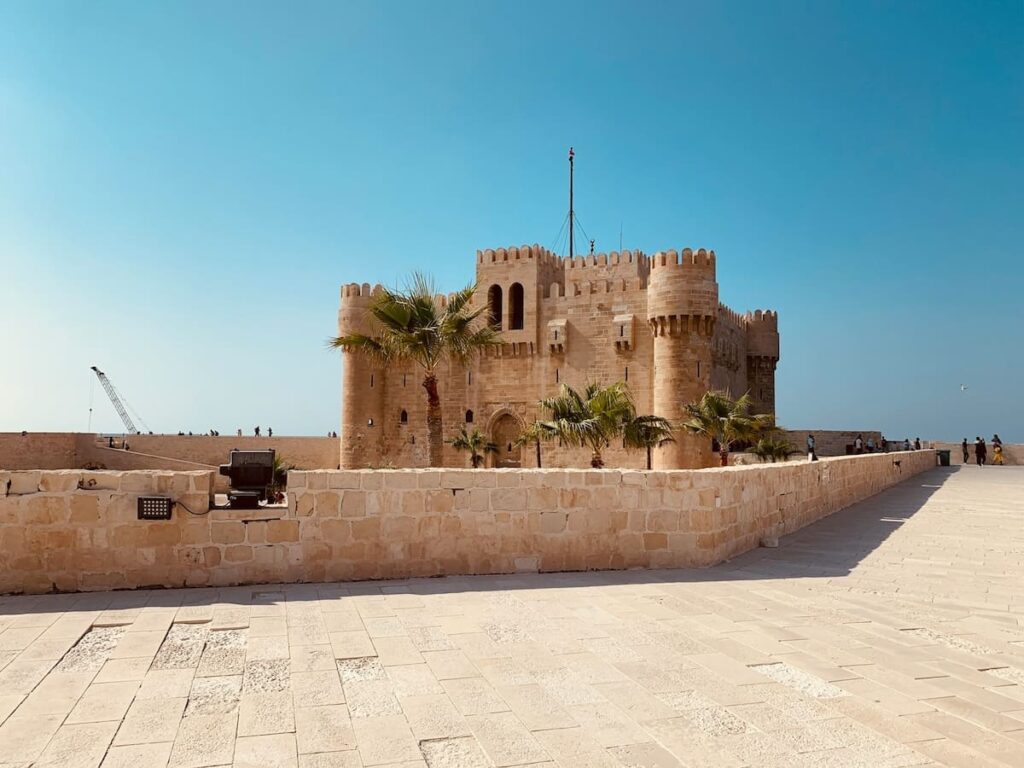
Siwa Oasis
Siwa Oasis, a remote and tranquil destination, is a hidden gem in Egypt’s historical landscape.
- Oracle Temple of Amun: This ancient temple was a significant site of pilgrimage in antiquity. Alexander the Great is said to have visited the oracle to seek confirmation of his divine status. The temple’s ruins, set amidst the serene oasis landscape, are steeped in mystery and legend.
- Shali Fortress: Built from kershef (salt and mud-brick), this ancient fortress offers panoramic views of the oasis and provides insight into the traditional architecture and community life of Siwa. Its narrow alleys and crumbling walls evoke a sense of timelessness.
Abydos
Abydos is one of Egypt’s most important archaeological sites, often referred to as the cradle of ancient Egyptian religion.
- Temple of Seti I: This temple is famous for its beautiful reliefs and the Abydos King List, a chronological list of pharaohs of Egypt. The temple’s intricate artwork and the sacred Osireion, believed to be a symbolic tomb of Osiris, make it a fascinating site for history buffs.
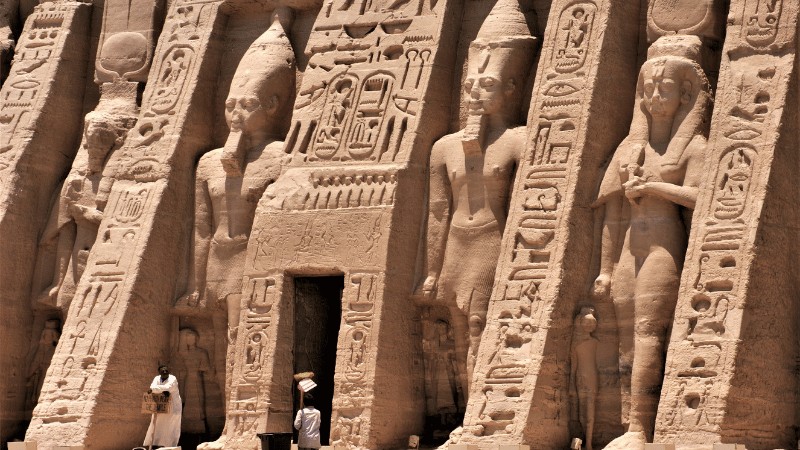
Dendera
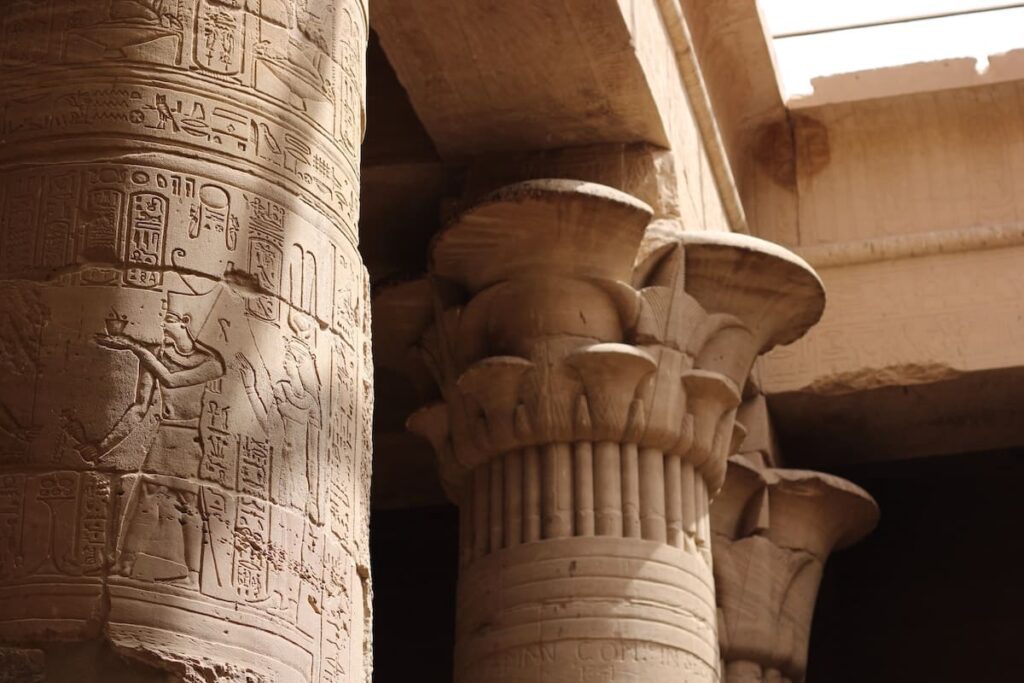
Dendera is home to one of the best-preserved temple complexes in Egypt.
- Temple of Hathor: This Greco-Roman temple dedicated to the goddess Hathor features stunning astronomical ceilings, beautifully decorated columns, and well-preserved reliefs. The temple’s crypts and rooftop also offer unique insights into ancient Egyptian religious practices.
Edfu
Edfu is located on the west bank of the Nile between Esna and Aswan.
- Temple of Horus: This temple is one of the best-preserved temples in Egypt and is dedicated to the falcon god Horus. Its grand pylons, intricate carvings, and impressive hypostyle hall make it a highlight of any trip along the Nile.
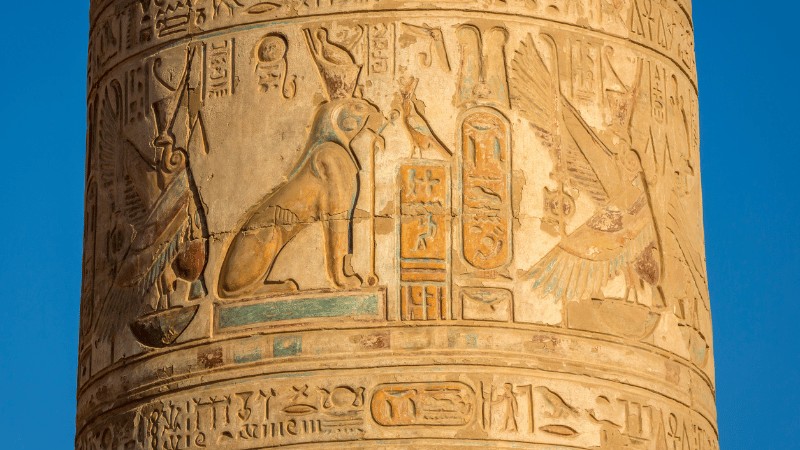
Kom Ombo
Kom Ombo is unique for its double temple dedicated to two gods.
- Temple of Sobek and Haroeris: This unusual temple is dedicated to both the crocodile god Sobek and the falcon god Haroeris (Horus the Elder). The site includes fascinating reliefs, mummified crocodiles, and a well-preserved nilometer.
Each of these cities and sites offers a unique window into Egypt’s rich history, inviting travelers to explore, learn, and connect with the past.
Types of Historical Travel Guides
When embarking on a historical journey through Egypt, the right guide can make all the difference. There are several types of historical travel guides available, each offering unique insights and experiences. Here’s a look at the different types of guides you can choose from:

Professional Guides
Professional guides are often the best choice for a truly immersive and educational experience. These guides are certified experts, many of whom are historians, archaeologists, or Egyptologists. Their extensive knowledge of Egypt’s history, combined with their passion for storytelling, brings the ancient world to life in a way that is both informative and engaging.
Imagine standing before the towering statues of Ramses II at Abu Simbel, as your guide explains the significance of the carvings and the incredible feat of relocating the temples. Or walking through the bustling alleys of Islamic Cairo, with a guide who can point out architectural details and recount tales of the city’s vibrant past. Professional guides provide context and depth, making your visit more meaningful and memorable
Digital Guides
In the digital age, technology offers innovative ways to explore historical sites. Digital guides, including apps, virtual tours, and audio guides, are convenient and flexible options for travelers. These guides often include interactive maps, detailed descriptions, and multimedia content, allowing you to explore at your own pace.
For example, a virtual tour of the Egyptian Museum can provide high-resolution images of artifacts, along with detailed information about their history and significance. Audio guides can enhance your visit to the Pyramids of Giza, offering insights into their construction and the legends that surround them as you walk around these ancient wonders. Digital guides are particularly useful for those who prefer a self-paced exploration or want to delve deeper into specific aspects of Egypt’s history.
Self-Guided Tours
Self-guided tours offer the freedom to explore historical sites on your own terms. Armed with maps, guidebooks, and suggested itineraries, you can set your own pace and linger at the spots that interest you the most. Self-guided tours are ideal for independent travelers who enjoy the flexibility to customize their experience.
A well-researched guidebook can be a treasure trove of information, providing historical context, practical tips, and recommended routes. Imagine following a suggested itinerary through Luxor, starting with an early morning visit to the Karnak Temple to avoid the crowds, then crossing the Nile to explore the Valley of the Kings. With a self-guided tour, you have the freedom to create your own adventure, discovering hidden gems and savoring each moment.
Cultural and Practical Tips for Historical Egypt Travel
To make the most of your historical journey through Egypt, it’s important to be prepared and respectful of the local culture. Here are some essential tips to enhance your travel experience:
Cultural Sensitivity
Respecting local customs and traditions is crucial when visiting historical sites. Egypt is a country with a rich cultural heritage, and showing respect for its traditions will enhance your experience and help you connect with the local community.
- Dress Modestly: In religious sites and conservative areas, it’s important to dress modestly. Cover your shoulders and knees, and consider wearing a hat or scarf to protect yourself from the sun.
- Respect Sacred Spaces: When visiting mosques, temples, and tombs, be mindful of their sacred nature. Follow any guidelines provided, such as removing your shoes or refraining from taking photos in certain areas.
- Engage with Locals: Take the time to learn a few basic phrases in Arabic and engage with local vendors, guides, and residents. A friendly attitude and genuine interest in their culture will be appreciated.
Practical Advice
Practical tips can help you navigate Egypt’s historical sites more comfortably and safely.
- best times to visit: The best times to visit Egypt are during the cooler months, from October to April. This will help you avoid the extreme heat of summer and enjoy your explorations more comfortably.
- What to Wear: Light, breathable clothing is essential for staying comfortable in Egypt’s climate. Don’t forget a hat, sunglasses, and sunscreen to protect yourself from the sun. Comfortable walking shoes are a must for navigating uneven terrain.
- Health and Safety: Stay hydrated and carry a reusable water bottle with you. Be cautious with street food and opt for bottled water to avoid any stomach issues. Keep an eye on your belongings and be aware of your surroundings, especially in crowded areas.
By following these cultural and practical tips, you can ensure a smooth and enjoyable historical journey through Egypt. Respect for the local culture and thoughtful preparation will enrich your experience, allowing you to fully immerse yourself in the wonders of this ancient land.
Conclusion
Exploring Egypt’s historical sites with knowledgeable guides is more than just sightseeing; it’s an opportunity to walk in the footsteps of pharaohs, scholars, and adventurers. These guides bring the past to life, offering insights that deepen our understanding of ancient civilizations and their enduring legacies.
So, what stories will you uncover in the sands of time? Embark on your own journey through Egypt’s history and let the ancient wonders inspire and enlighten you. With the right guide by your side, every step you take will be a step back in time, a chance to connect with the rich heritage of this extraordinary land






